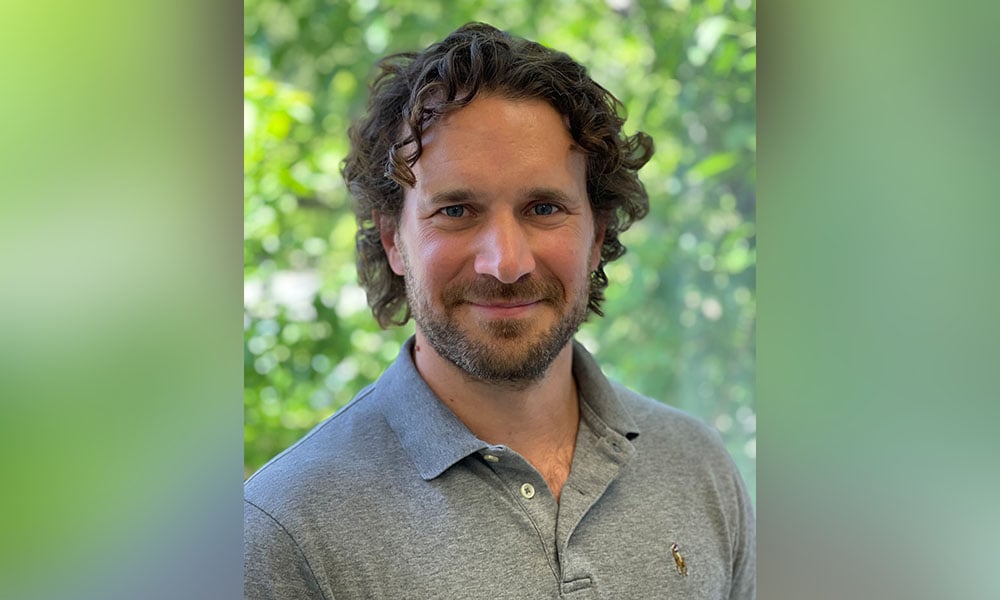Company CEO explains how royalty and streaming investment model can catalyse impact investment projects around the world

Last week, the UN-backed Intergovernmental Panel on Climate Change (IPCC) issued an urgent plea for humanity to act against climate change.
In its report titled Climate Change 2021: The Physical Science Basis, the panel said that elevated sea levels and other unprecedented environmental changes, driven by human activity, have gone past the point of no return.
But the IPCC said mankind still has a chance to avoid a worse fate. It said that through urgent and concerted action, it’s possible to limit increases in global temperatures in the coming decades.
“Stabilizing the climate will require strong, rapid, and sustained reductions in greenhouse gas emissions, and reaching net-zero CO2 emissions,” IPCC Working Group I Co-Chair Panmao Zhai said in a statement accompanying the report’s release.
Companies around the world are already taking action. Faced with regulatory and public pressure, more and more organizations of all kinds – including notoriously “dirty” industries like oil and mining – are making net-zero commitments, promising that they will offset and neutralize their carbon footprint by 2050 or some other specified future date.
Still, some people don’t think that goes far enough. Justin Cochrane, the president and CEO of Carbon Streaming, argues that net-zero goals fall short of what’s needed to turn back the clock on decades of environmental neglect and climate-change denialism.
“What we should really be talking about is net-negative – not just stopping climate change, but reversing climate change and reducing the amount of carbon that's in the atmosphere,” Cochrane told Wealth Professional. “And I believe over the next decade, that’s where the conversation will go.”
As Cochrane explained, he and his team at Carbon Streaming believe trillions of dollars in investment will be needed to reduce global warming to less than two degrees above pre-industrial levels, a target set out in the Paris Agreement. That effort, he said, will require new ways of bringing public and private capital to climate finance – and that’s what his company aims to help with.
“We’re taking the royalty and streaming model of financing, a model that’s been proven in the mining and energy space, and applying it to carbon projects,” he said.
It’s a model he and his team know well. As an investment banker at National Bank Financial, he spent the latter half of the 2000s working with some of the world’s largest royalty and streaming companies. In 2010, he became one of the first employees at Sandstorm Gold; in 2015, he left and went on to launch three separate royalty and streaming investment companies, all publicly listed in Europe and Canada.
“I’ve raised and invested billions of dollars in over 50 different streaming and royalty investments through my career,” he said.
In the traditional royalty and streaming model, companies lend money to mining and other resource companies in exchange for a share of future profits from their activities. In Carbon Streaming’s case, the company enters into carbon credit streaming arrangements with developers of projects that are able to remove or reduce carbon emissions into the atmosphere.
“A carbon credit represents one metric ton of carbon dioxide or carbon dioxide equivalent that's either removed directly from the atmosphere, or prevented from being emitted into the atmosphere,” Cochrane said. “If the developer of a project can prove that it’s accomplishing that to an independent organization, they get the right to issue and sell carbon credits.”
Not all carbon credits are created equal, he explained. Investors in the carbon credit space may also be interested in so-called co-benefits, which are associated with a project’s ability to deliver positive impact aside from carbon reduction. At the moment, Carbon Streaming is set to acquire the rights to such high-quality carbon credits through three agreements.
The Rimba Raya Biodiversity Reserve Project was established to preserve a 65,000-hectare swath of tropical lowland peat swamp forests in Borneo; it’s home to over 600 species of flora and fauna, including endangered Bornean orangutan. The project also supports the local community with facilities like water filtration systems, floating health care clinics, and scholarships to members of the community.
“It’s one of the only projects in the world to meet all 17 of the UN’s Sustainable Development Goals, and it’s estimated to reduce greenhouse gas emissions by roughly 3.5 million tons of CO2 equivalent per year over 30 years,” Cochrane said. “There are more than 7,000 active carbon projects around the world, and they avoid or reduce a cumulative total of 400 million tons annually.”
Meanwhile, the MarVivo Blue Carbon Conservation Project in Magdalena Bay in Baja California Sur, Mexico, focuses on the conservation of 22,000 hectares of mangrove forests and 137,000 hectares of their associated marine habitat. That makes it eligible for blue carbon credits – highly valued in the carbon credit market – and it’s expected to avoid the emission of just under a million tons of CO2 equivalents a year.
Finally, under an agreement with the Bonobo Conservation Initiative, Carbon Streaming is supporting two major rainforest conservation projects in the Democratic Republic of Congo. Anticipated to remove and avoid hundreds of millions of tons of CO2 equivalent over their 30-year lifespans, the projects help preserve the habitat of the endangered bonobos, and also make significant investments for the welfare of the local communities.
To collect even more capital in support of other projects, Carbon Streaming recently went public on the NEO Exchange; in the same week, it made its debut on the Frankfurt Exchange in Germany. Aside from offering tremendous support, Cochrane said NEO is an ideal exchange venue in North America as it provides a pathway to the next step in the company’s business plan.
“Because NEO is viewed as a Senior Tier 1 Exchange, it opens the door for us to list on a U.S. exchange, which we’re hoping to do by the end of the year,” he said. “At the same time, NEO is open to every retail and institutional investor around the world, and we think it’s crucial to have public and private capital flowing into the domain of climate finance.”



